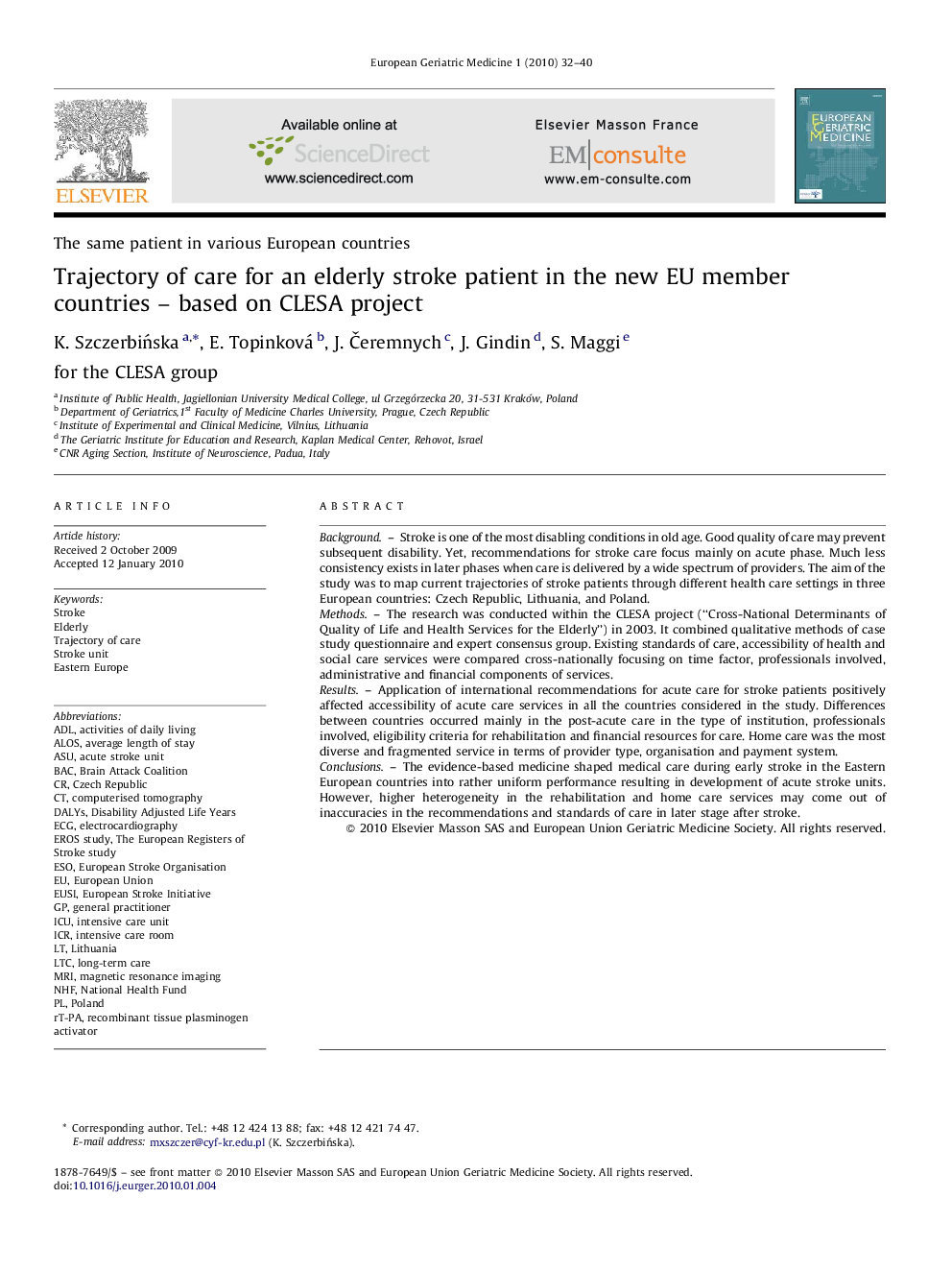| Article ID | Journal | Published Year | Pages | File Type |
|---|---|---|---|---|
| 3324726 | European Geriatric Medicine | 2010 | 9 Pages |
BackgroundStroke is one of the most disabling conditions in old age. Good quality of care may prevent subsequent disability. Yet, recommendations for stroke care focus mainly on acute phase. Much less consistency exists in later phases when care is delivered by a wide spectrum of providers. The aim of the study was to map current trajectories of stroke patients through different health care settings in three European countries: Czech Republic, Lithuania, and Poland.MethodsThe research was conducted within the CLESA project (“Cross-National Determinants of Quality of Life and Health Services for the Elderly”) in 2003. It combined qualitative methods of case study questionnaire and expert consensus group. Existing standards of care, accessibility of health and social care services were compared cross-nationally focusing on time factor, professionals involved, administrative and financial components of services.ResultsApplication of international recommendations for acute care for stroke patients positively affected accessibility of acute care services in all the countries considered in the study. Differences between countries occurred mainly in the post-acute care in the type of institution, professionals involved, eligibility criteria for rehabilitation and financial resources for care. Home care was the most diverse and fragmented service in terms of provider type, organisation and payment system.ConclusionsThe evidence-based medicine shaped medical care during early stroke in the Eastern European countries into rather uniform performance resulting in development of acute stroke units. However, higher heterogeneity in the rehabilitation and home care services may come out of inaccuracies in the recommendations and standards of care in later stage after stroke.
